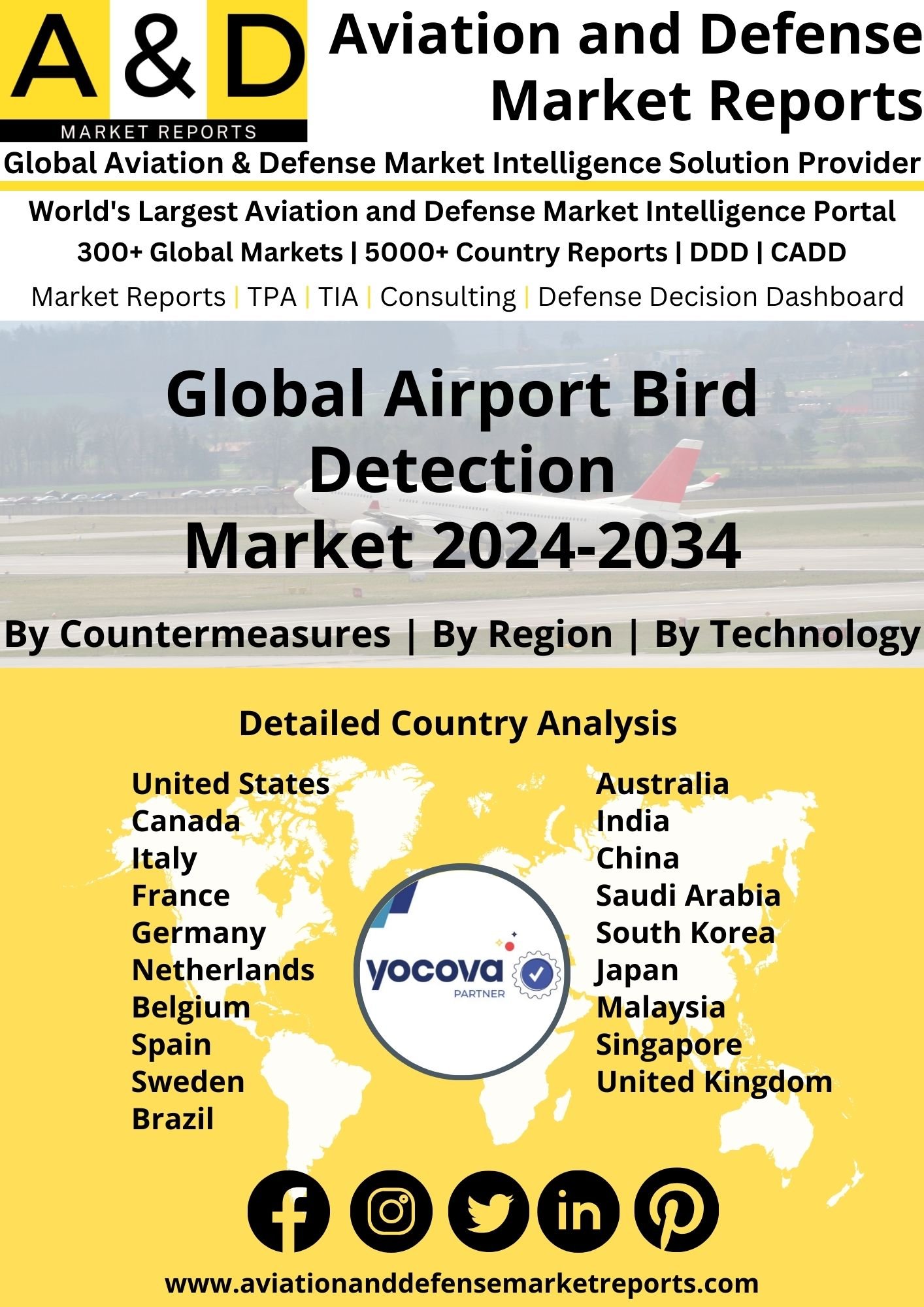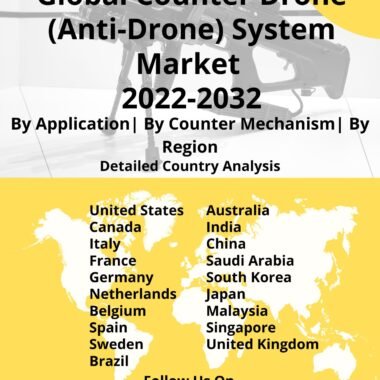Description
Airport Bird Detection Market
Frequently Asked Questions of Global Airport Bird Detection Market
Airport bird detection systems are designed to monitor and mitigate bird activity in and around airports. Birds pose a significant risk to aviation safety as they can collide with aircraft, leading to potential damage to the aircraft and endangering passengers and crew. Bird detection systems help airports identify and track bird movements, allowing for proactive measures to prevent bird strikes and reduce the risk of accidents. Bird detection systems often employ radar technology to detect and track birds in the vicinity of the airport. Radar systems can detect and classify birds based on their size, altitude, and flight patterns. These systems provide real-time information on bird activity, allowing airport operators to monitor and respond to potential risks. Bird detection systems may utilize video surveillance cameras strategically placed around the airport to visually monitor bird behavior. The cameras capture live video feeds, which can be analyzed by computer vision algorithms to detect and identify birds. Video surveillance helps complement radar data and provides visual confirmation of bird presence.
Bird detection systems integrate radar data, video feeds, and other relevant sensor inputs to provide a comprehensive situational awareness of bird activity. Advanced algorithms analyze the data to identify bird movement patterns, nesting areas, and hotspots. This analysis helps airports understand bird behavior, predict potential hazards, and implement appropriate mitigation measures. When bird detection systems detect significant bird activity or the presence of species known to pose a higher risk, they can generate automated alerts and warnings. These alerts can be sent to airport operations personnel, air traffic control, and wildlife management teams. Prompt notifications allow for timely response, such as issuing warnings to pilots or initiating bird control measures.
Bird detection systems help airports implement targeted bird control measures to reduce the risk of bird strikes. These measures can include deploying bird-repellent systems, using deterrent devices such as bird-scaring pyrotechnics or lasers, modifying habitats to make them less attractive to birds, and coordinating wildlife management activities. Bird detection systems can be integrated with the overall airport operations and safety management systems. This integration allows for seamless coordination between bird monitoring, air traffic control, and airport emergency response teams. By integrating bird detection systems with other airport systems, potential bird strike risks can be proactively addressed, ensuring safer operations.
Major factors driving the Airport Bird Detection Market Growth
The construction and expansion of airports worldwide have provided opportunities for the installation of bird detection systems. New airport developments and upgrades often include wildlife management plans, with bird detection systems playing a crucial role. The increasing number of airports investing in bird detection systems has contributed to the growth of the market.
Trends Influencing The Airport-Bird Detection Market Growth
The development of advanced technologies, such as radar systems, computer vision algorithms, and data analytics, has enhanced the effectiveness of bird detection systems. These technological advancements enable more accurate and real-time monitoring of bird activity, improving the ability of airports to detect and respond to potential bird strike risks. The continuous innovation in sensor technology and data processing algorithms has further driven market growth.
Airport-Bird Detection Market Dynamics
Aviation regulatory bodies, such as the International Civil Aviation Organization (ICAO) and local aviation authorities, have established guidelines and regulations for wildlife management at airports. These regulations require airports to implement bird hazard management programs, which often include bird detection systems as a proactive measure to prevent bird strikes. Compliance with these regulations has fueled the adoption of bird detection systems.
The market prediction consists of a thorough examination and evaluation of the market, along with its overall size. The examination encompasses an assessment of the market’s size at a regional level, as well as an examination of the factors driving its growth, constraints affecting it, and potential opportunities. Additionally, the regional analysis provides insights into the market size specific to each country.
Airport Bird Detection Market Analysis for Recent Developments
Bird strikes cost US airlines more than $400 million per year, according to FAA estimates, and have resulted in more than 200 deaths since 1998. 90% of these occurrences occur near an airport, making the strikes a severe operational danger for commercial aircraft. The MERLIN BDR-DDR was designed for real-time, tactical operational bird strike avoidance, and MERLIN now offers TRUE3D capabilities for simultaneous bird and drone detection. DeTect specializes in innovative radar and remote sensing technologies that are used to defend the airspace around vital locations from airborne dangers. Customers use DeTect’s technology for a variety of purposes, including flying commercial UAVs beyond visual line of sight (BVLOS) and keeping bats and birds at bay.
Birds are a known flight safety problem that flight operations rarely address due to a lack of real-time data on bird behavior. Even though radars have been employed to track avian activity, their capacity to identify birds at low levels is restricted. The US Federal Aviation Administration (FAA) has tested a novel infrared scanning sensor named ‘Interceptor’ at Laguardia (LGA) Airport to increase the capabilities of detecting and tracking bird behavior near airports and is currently investigating the device at Whidbey Island in Washington state. Control Precision Technology from Israel and Provision from the United States created this automatic bird detection technology.
The global landscape of airport bird detection has seen significant advancements, addressing safety concerns and operational challenges posed by bird strikes at airports. Bird detection systems utilize advanced technologies to monitor avian activity around airports, mitigating the risk of bird-aircraft collisions. Radar-based bird detection systems, equipped with sophisticated algorithms, provide real-time monitoring of bird movements in and around airport airspace. These systems help airport authorities identify potential bird hazards and take preventive measures to ensure flight safety.
Integration with wildlife management systems allows for data analysis and decision support tools, enabling airports to implement targeted strategies to deter birds and reduce the risk of collisions. This includes habitat management, acoustic deterrents, and other non-lethal measures. Collaboration between airports and technology providers has led to the development of innovative solutions, including drone-based bird detection systems and advanced cameras with image recognition capabilities. These technologies enhance the accuracy and efficiency of bird monitoring efforts. Global initiatives and industry collaborations promote the standardization of bird detection technologies and best practices, ensuring consistency in bird hazard management across different airports worldwide. The ongoing evolution of airport bird detection in 2023 reflects a commitment to enhancing aviation safety and reducing the impact of wildlife on airport operations.





